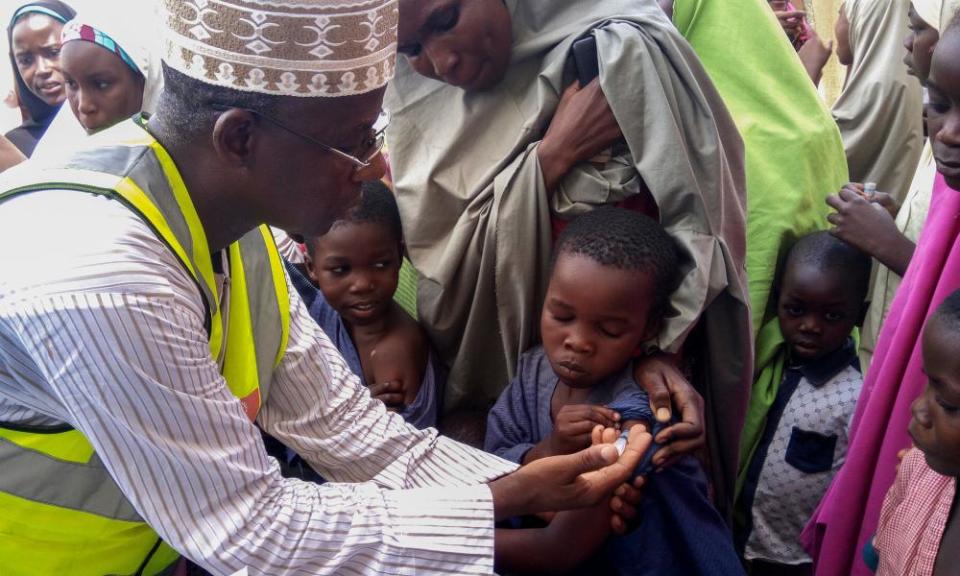Meningitis epidemics could be forewarned by weather forecasts in sub-Saharan Africa

A weather-based surveillance system that could offer advanced warning of outbreaks of meningitis is being piloted across sub-Saharan Africa in a bid to save lives, researchers have revealed.
According to the Meningitis Research Foundation, meningitis affects about 5 million people around the world each year, one in 10 of whom die, while two in 10 are left with lasting impacts, such as brain damage.
One area that has had major outbreaks of bacterial meningitis – a contagious and particularly serious form of the condition – is the so-called “meningitis belt” that cuts across a host of countries in sub-Saharan Africa, with outbreaks most common between November and June.
That, experts say, is in part because hot and dusty conditions raise the risk of bacterial meningitis: among various mechanisms, previous studies have suggested dust can irritate the lining of the nose and throat, making it easier for microbes to get into the bloodstream and cause infection.
And the situation could become worse: charities have previously warned that the climate crisis could lead to a rise in meningitis cases.
Now researchers have announced a pilot is under way that could offer advanced warning of when and where meningitis outbreaks or even epidemics may occur by harnessing state-of-the-art weather forecasts to predict where conditions that fuel meningitis cases are likely to develop.
“Previously it was only really possible to use the current weather conditions to see what was going on, and use that to project how outbreaks would come. Now we are able to use forecasts for up to two weeks ahead, which obviously gives much more warning for deployment of resources,” said Prof Doug Parker of the University of Leeds, the lead scientist at the African SWIFT collaboration, one of the bodies involved in the pilot project.
While experts say the project cannot prevent infections, it could save lives by ensuring the limited resources of the countries are in place – for example around testing, diagnosis and treatment.
“By making sure the appropriate medical services are on offer to those most likely to be affected by a meningitis outbreak, the number of fatalities and the severity of symptoms is being reduced,” said Dr Joshua Talib, research associate at the UK Centre for Ecology and Hydrology, who has been involved in the work.
The two-year project, which is being run across 26 countries in the “meningitis belt”, began in late 2019 with the development of new ways of using the latest weather forecasts. These are now being pilotedfor their effectiveness and usefulness when it comes to predicting and managing meningitis cases.
“We are getting positive feedback from the medics,” said Parker, adding that detailed evaluation of the impact of the project is under way.
But there is more to do. “Due to the resolution of sub-seasonal forecast data, this prediction can only be provided on a county [or] country-level,” said Talib. “Scientists are working hard to improve the predictability and resolution of sub-seasonal forecasts.”
The pilot, which is backed by the UK government’s Global Challenges Research Fund, is a joint effort by the National Centre for Atmospheric Science, African SWIFT and the African Centre of Meteorological Applications for Development.
Related: I lost my baby girl to meningitis – that’s why I’m passionate about vaccination | Bobby Joseph
However, Parker said the future of the project was under threat as a result of recent cuts to the Global Challenges Research Fund.
Linda Glennie, research director at the charity Meningitis Research Foundation, which is not involved with the project but funded early research into the use of weather data to predict outbreaks, welcomed the pilot.
“Sub-Saharan Africa has the highest burden of meningitis in the world. For at least a century, meningitis epidemics have swept across the region during the dry season. Despite the success of immunisation, even in the last decade, hundreds of thousands of people living in the region have faced the devastating consequences of the disease,” she said.
“Although epidemics occur frequently, they are difficult to predict. Any tools which can forecast where meningitis is likely to strike will help to ensure vaccinations and antibiotics are readily available to save lives”.

 Yahoo News
Yahoo News 